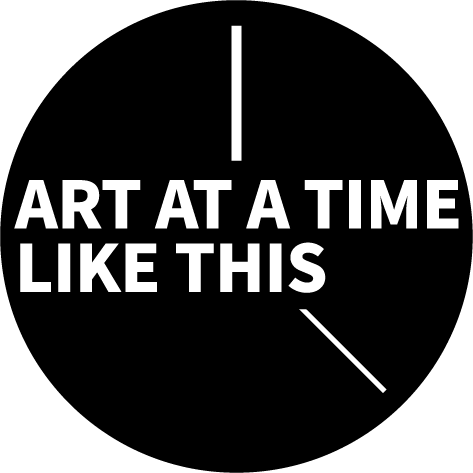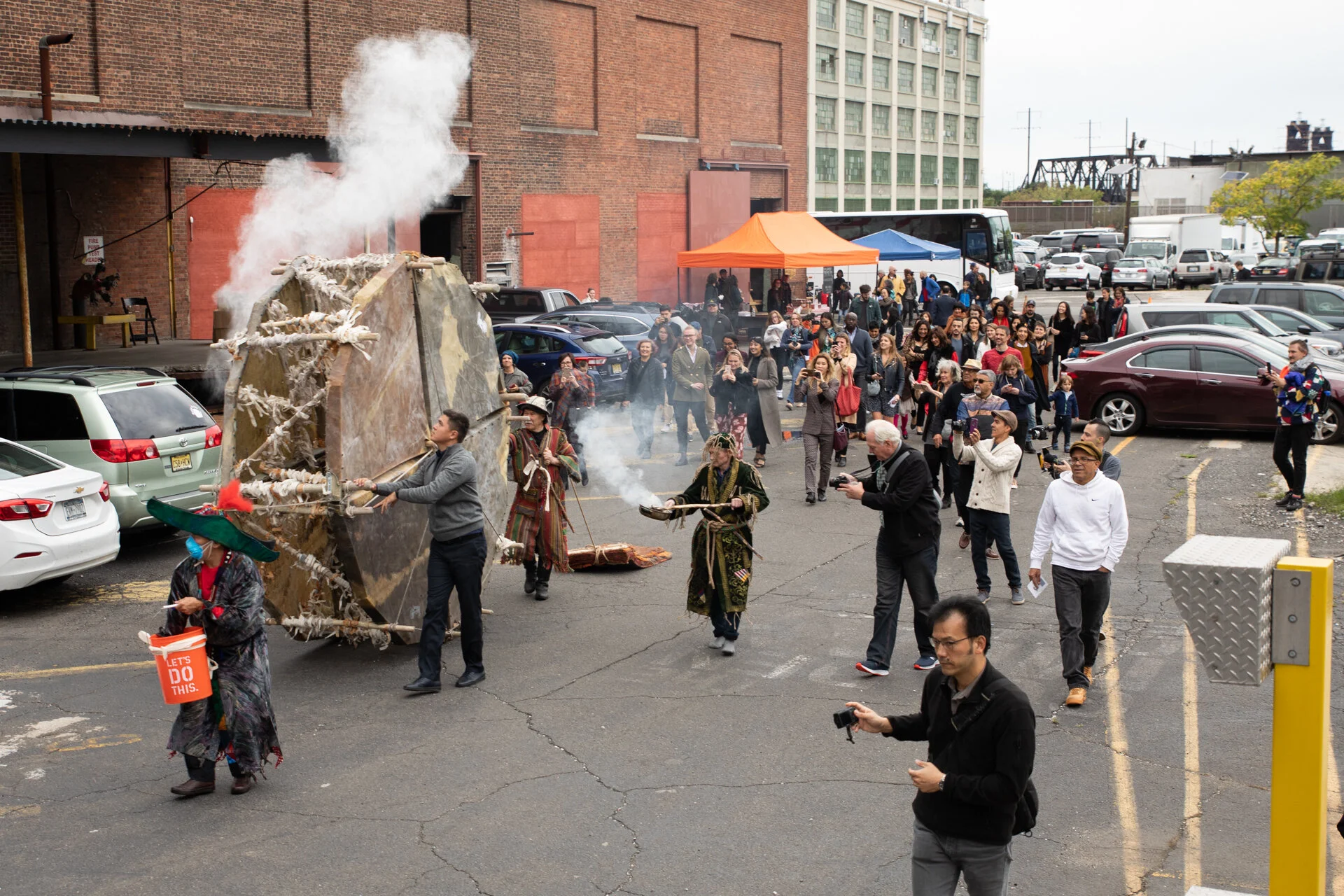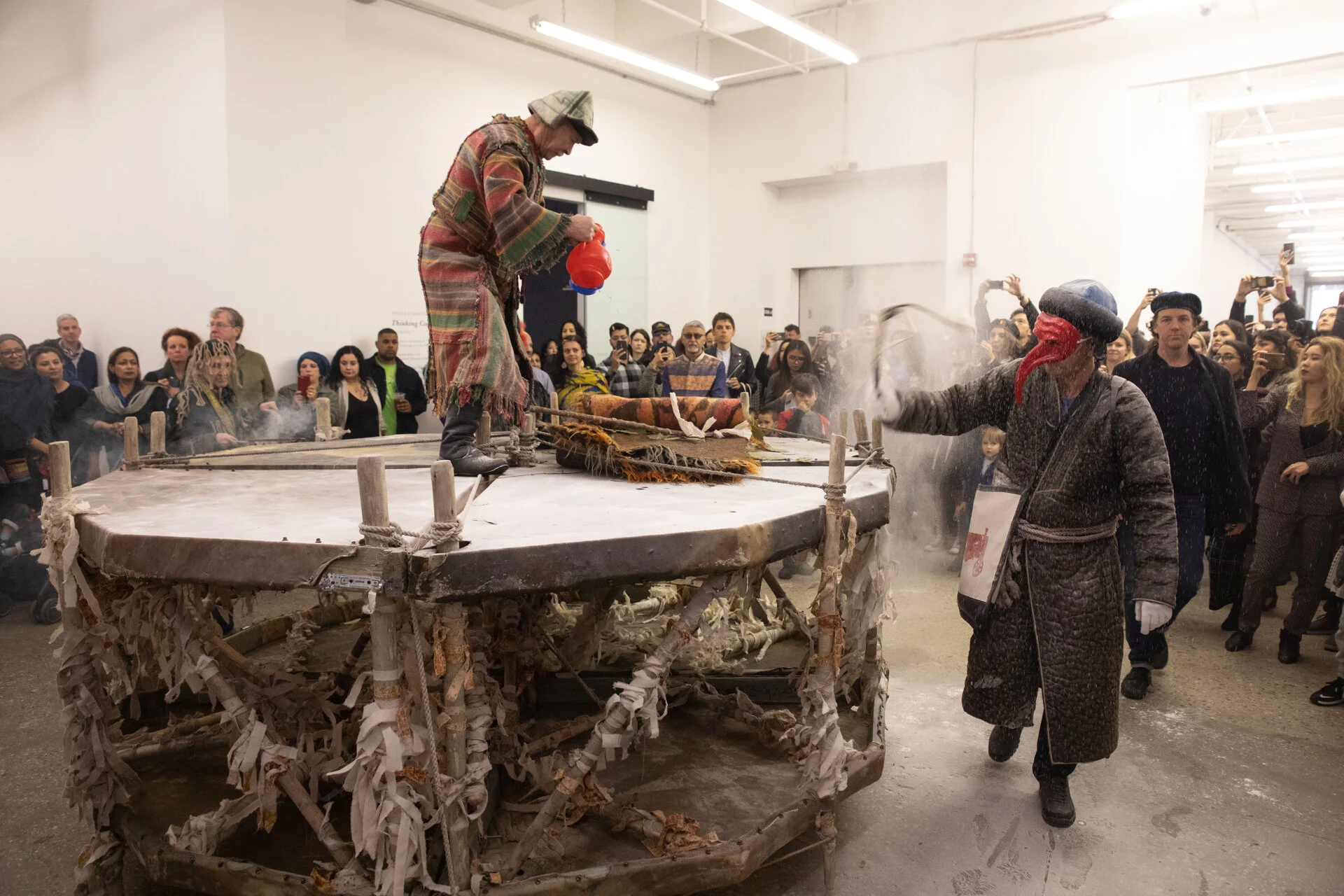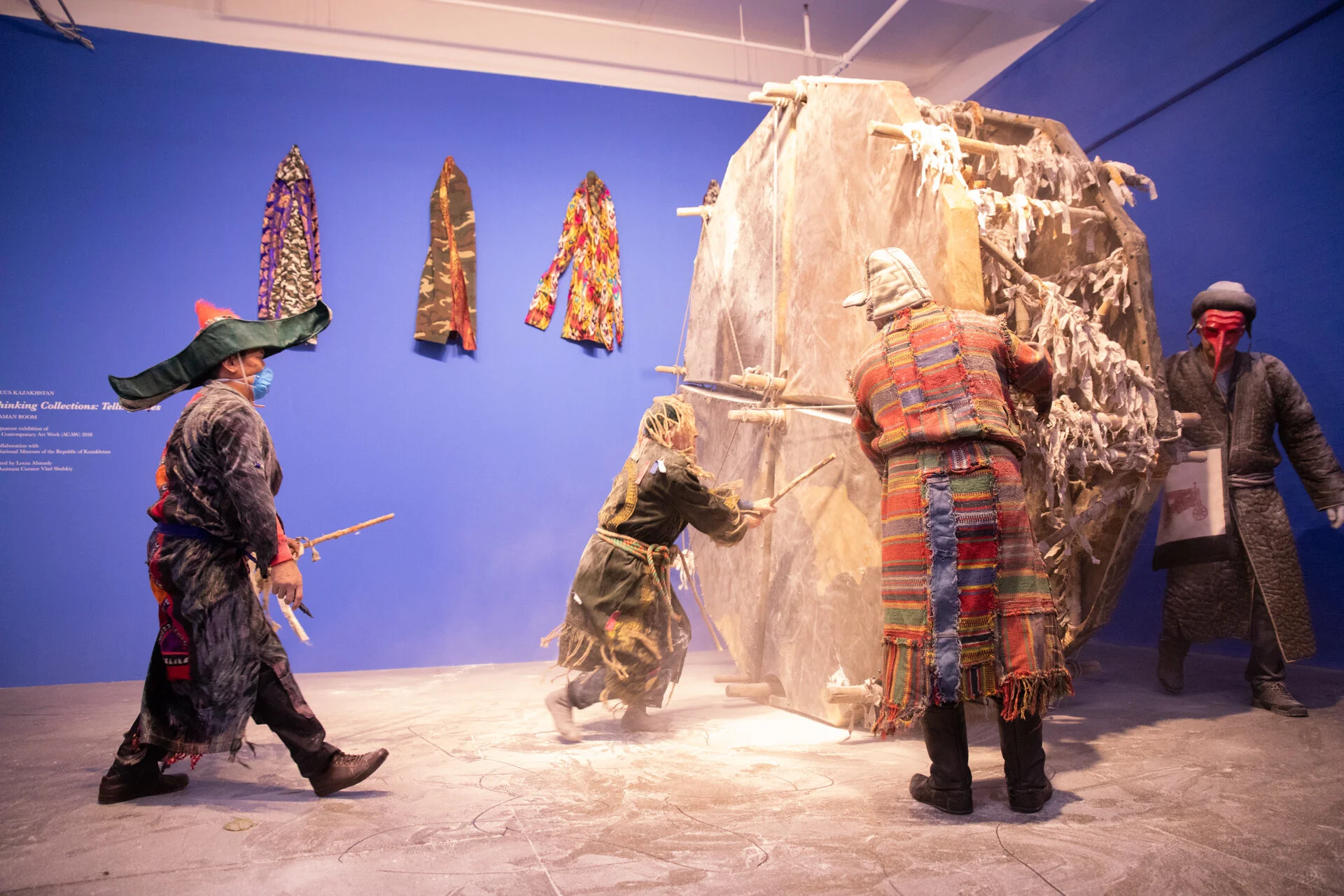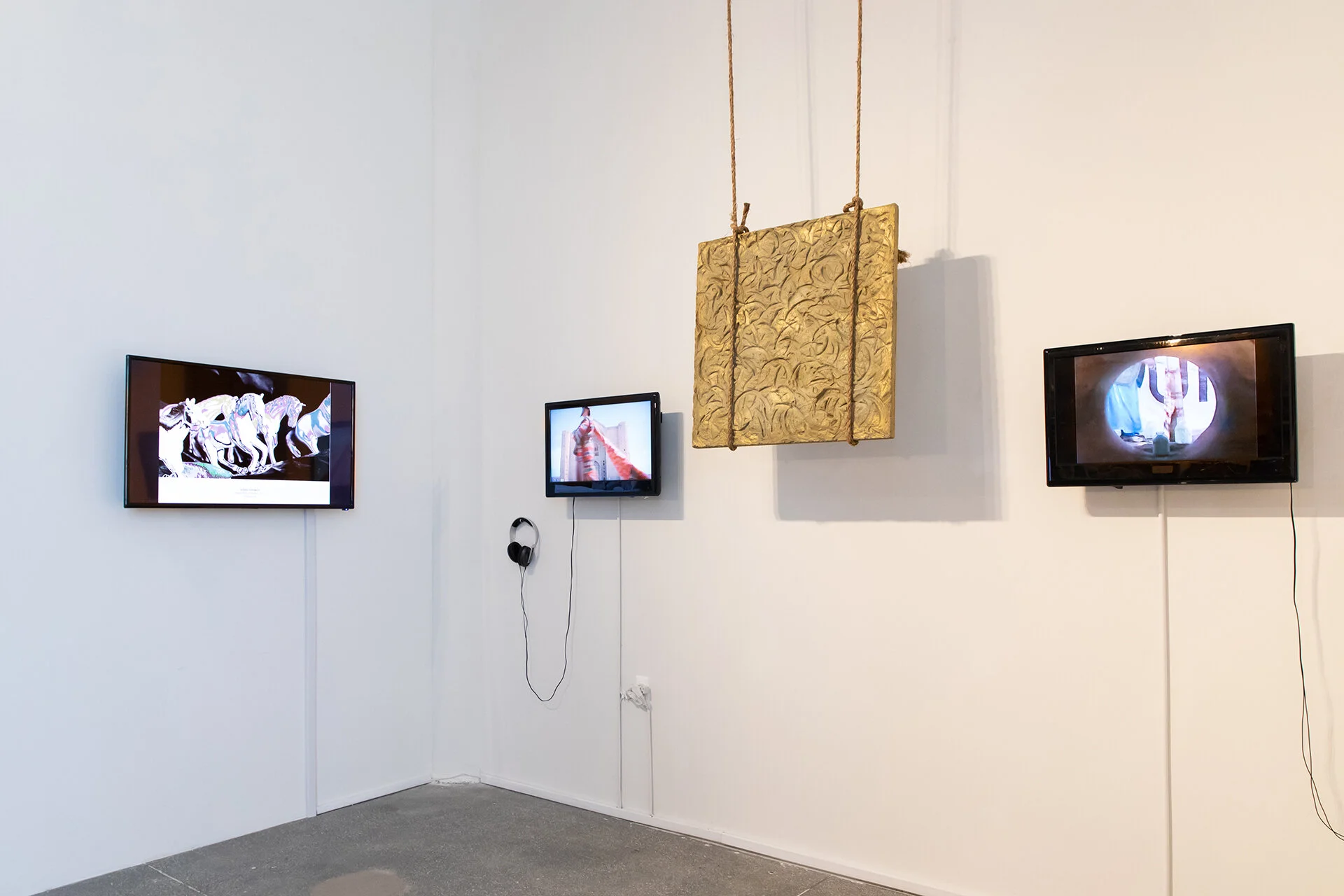
Guest-curated by Leeza Ahmady, Director of Asia Contemporary Art Forum
A week-long show-within-a-show presenting 5 curators, June 15 — 19.
Details here, Day 4: Leeza Ahmady
Leeza Ahmady
Purification, 2018, Performance Documentation
‘Focus Kazakhstan—Thinking Collections: Telling Tales as part of Asia Contemporary Art Week 2018 Signature Exhibition
With a tendency to monumentalize sound instruments, Kyzyl Tractor—Kazakhstan’s most celebrated art collective —used the drum in their performance “Purification” specially commissioned for Asia Contemporary Art Week 2018’s signature exhibition: Thinking Collections: Telling Tales. These select photos and video documentation are a part of the first survey of this legendary collective’s body of performances and objects from the mid-1990s onwards, which I had the pleasure of curating alongside Vladislav Sludskiy, at Mana Contemporary in collaboration with the National Museum of the Republic of Kazakhstan.
Made with wood and animal skin, the drum inserts ancient and indigenous materials along with Shamanistic customs into contemporary society. Kyzyl Tractor believes that the sounds of the cosmos were once sent through the drum and will return as a form of goodwill. In an age of uncertainty, pandemics, wars, hatred, and violence, it feels essential to shake the universe with massive sound waves.
As a processional ceremony, the 2018 performance in Jersey City involved the artists rolling and sounding off one of their largest drums to date (specially built for this iteration). With a captivated crowd following them across Mana Contemporary’s outside grounds, the four Kyzyl Tractor members burned sage, generating large clouds of smoke while sprinkling water and making deep grunting shaman sounds. Today, it has been scientifically proven that sonic waves can block some forms of bacteria and viruses. For instance, the sound of church bells during the 1770s plague epidemic in Russia helped to rehabilitate cities like Moscow and St. Petersburg. The force required to sound a bell, both physically and symbolically, allows for repetitive waves to cure ailments and eradicate harmful organisms. Drum-based rituals like this one are still widely practiced by shamans in Latin America, Southeast Asia, Africa, and Siberia. Kyzyl Tractor has performed “Purification” in Prague, Perm, Vienna, Shymkent, Almaty, and Jersey City for the first time.
Kyzyl Tractor is not concerned with the preservation of their art for the future. Most of the objects that the collective made were meant to be props for their performances. Some of them survived the performances, and people were able to keep or take care of them. Generally, though, Kyzyl Tractor’s work is more of an act. It is about a moment in time—an ephemeral exchange between themselves and a group of people in a particular time and space. Presented here in a virtual space, “Purification” is a proposition for transforming chaos in the world into harmonious flow— a movement towards a state of consciousness, transcending from darkness or depression to lightness and ecstasy. It was inevitable to revisit the “Purification” performance in times like these, inviting—though merely virtually—a transformation from perceived chaos into positive flow. This process suggests that instead of fearing or banishing undesired qualities or feelings, such as envy, anger, or bitterness, one should find a way to transmute them, ending in their sublimation.
The location and context of this recreated work were especially critical to address questions about the future of humanity, the earth, kindness, and appreciation. It is just as important today to redefine the fate and state of our interactions, our shared kindness, and communal healing.
Kyzyl Tractor Art Collective Purification, 2018, performance documentation as part of the signature exhibition of Asia Contemporary Art Week (ACAW) 2018: Focus Kazakhstan—Thinking Collections: Telling Tales, October 14, 2018 Image Courtesy of ACAW Photograph by Michael Wilson
Kyzyl Tractor Art Collective Purification, 2018, performance documentation as part of the signature exhibition of Asia Contemporary Art Week (ACAW) 2018: Focus Kazakhstan—Thinking Collections: Telling Tales, October 14, 2018 Image Courtesy of ACAW Photograph by Michael Wilson
Kyzyl Tractor Art Collective Purification, 2018, performance documentation as part of the signature exhibition of Asia Contemporary Art Week (ACAW) 2018: Focus Kazakhstan—Thinking Collections: Telling Tales, October 14, 2018 Image: Courtesy of Asia Contemporary Art Week, Photograph by Michael Wilson
Kyzyl Tractor Art Collective Purification, 2018, performance documentation as part of the signature exhibition of Asia Contemporary Art Week (ACAW) 2018: Focus Kazakhstan—Thinking Collections: Telling Tales, October 14, 2018 Image Courtesy of ACAW Photograph by Michael Wilson
Kyzyl Tractor Art Collective Thinking Collections: Telling Tales exhibition view as part of the signature exhibition of Asia Contemporary Art Week (ACAW) 2018. Image Courtesy of Asia Contemporary Art Week, Photograph by Michael Wilson
Kyzyl Tractor Art Collective Thinking Collections: Telling Tales exhibition view as part of the signature exhibition of Asia Contemporary Art Week (ACAW) 2018. Image Courtesy of Asia Contemporary Art Week, Photograph by Michael Wilson
Kyzyl Tractor Art Collective Thinking Collections: Telling Tales exhibition view as part of the signature exhibition of Asia Contemporary Art Week (ACAW) 2018. Image Courtesy of Asia Contemporary Art Week, Photograph by Michael Wilson
Kyzyl Tractor Art Collective Thinking Collections: Telling Tales exhibition view as part of the signature exhibition of Asia Contemporary Art Week (ACAW) 2018. Image Courtesy of Asia Contemporary Art Week, Photograph by Michael Wilson
Kyzyl Tractor Art Collective Chest of Knowledge 2020 Sculpture- Thinking Collections: Telling Tales exhibition view as part of the signature exhibition of Asia Contemporary Art Week (ACAW) 2018. Image Courtesy of Asia Contemporary Art Week, Photograph by Michael Wilson
Kyzyl Tractor Art Collective Shaman Room 2020 -Thinking Collections: Telling Tales exhibition view as part of the signature exhibition of Asia Contemporary Art Week (ACAW) 2018 Image Courtesy of Asia Contemporary Art Week, Photograph by Michael Wilson
